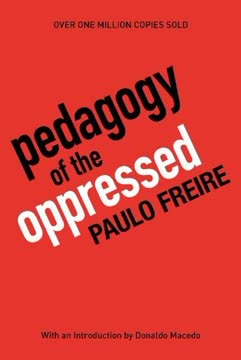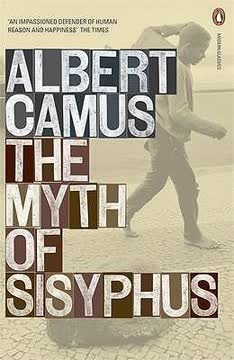Key Takeaways
1. Moral Subjectivism Rests on a Mistake: The Gap Between Grounds and Judgment
It is this gap between ground and moral judgement that I am denying.
Subjectivism's core error. Theories like emotivism and prescriptivism, dominant in modern moral philosophy, claim that moral judgments require a speaker's subjective feelings, attitudes, or intentions beyond factual description. This creates a logical gap: even if all factual grounds are met, someone might not make the moral judgment because they lack the required subjective state.
Hume's practicality requirement. These theories attempt to explain morality's action-guiding nature, a point David Hume rightly emphasized. They argue that moral judgments motivate action because they express desires or commitments, linking morality to the agent's "conative" state.
Rejecting the gap. The mistake is assuming this subjective element is necessary for moral judgment itself. Moral judgments, I argue, are assertions about facts – facts about what there is reason to do. The connection to action comes not from a subjective state, but from the nature of practical rationality itself.
2. Introducing Natural Norms: Goodness in Plants and Animals
Expressivist theories have the remarkable though seldom-mentioned consequence of separating off the evaluation of human action not only from the evaluation of human sight, hearing, and bodily health but also from all evaluation of the characteristics and operations of plants and animals.
A different kind of evaluation. Unlike evaluating things based on human interests (secondary goodness), living things possess an "autonomous," "intrinsic," or "natural" goodness. This applies to plants and animals and their parts or operations, independent of their usefulness or beauty to us.
Beyond human attitudes. We don't explain the goodness of strong roots or sharp fangs by saying we have a "pro-attitude" towards them. These evaluations are objective facts about the living thing itself, based on its nature and way of life.
A shared conceptual structure. The evaluation of human action, I propose, shares a basic logical structure with these evaluations of non-human living things. Moral defect is a form of natural defect, not fundamentally different from defects found in sub-rational life.
3. Life Form Determines Natural Goodness: The Role of Teleology
We start from the fact that it is the particular life form of a species of plant or animal that determines how an individual plant or animal should be...
Aristotelian categoricals. Descriptions of living things often rely on propositions about the species or "life form" (e.g., "Rabbits are herbivores," "The male peacock displays its tail"). These are not statistical claims about every individual but describe the characteristic way of life of the species.
Function and purpose. These "Aristotelian categoricals" are linked to teleology – the function or purpose of a characteristic or operation within the life cycle of the species. What "plays a part in the life" of a living thing is causally and teleologically related to its development, self-maintenance, and reproduction.
Norms from life form. Natural goodness and defect are determined by this life form. A slow deer is defective because swiftness is necessary for the deer's characteristic defense (flight) and survival. This establishes norms independent of human desires or interests.
4. Transition to Humans: Evaluating Characteristics by Life Form
The question is, therefore, whether characteristics of humans can be evaluated in relation to the part they play in human life, according to the schema of natural normativity that we found in the case of plants and animals.
Applying the schema. Can the same structure of natural normativity apply to human beings? Yes, initially for physical and mental characteristics like sight, hearing, memory, and the capacity for language. These can be evaluated as good or defective based on their role in human life.
Beyond mere biology. While rooted in our biological nature, human life is vastly more complex than that of plants or animals. Human good involves language, imagination, social cooperation, and diverse activities, leading to a much wider range of evaluable characteristics and operations.
Human necessities. Despite diversity, we can identify general human necessities by considering deprivation. Lack of capacity for language, imagination, or social connection constitutes a defect because these are needed for human good, just as strong roots are needed for an oak.
5. Human Action and Will: Virtues as Natural Perfections
And if we ask whether Geach was right to say that human beings need virtues as bees need stings (see Chapter 51), the answer is surely that he was.
Virtues as excellences. Moral virtues like justice, charity, courage, and temperance are excellences of the human will and action. They are dispositions that enable human beings to act well, just as swiftness enables a deer to escape predators.
Needed for human good. Virtues are necessary for human beings to live well, given our nature as social, rational animals. Cooperation, trust, family ties, and codes of conduct are essential elements of human life, and virtues like loyalty, fairness, and kindness make these possible.
Promise-keeping example. Breaking a promise is bad because the institution of promising is an "Aristotelian necessity" for human life – something on which much human good hangs, given our limited means of binding each other's wills. This evaluation derives from facts about human life and capacities, not from subjective attitudes or utilitarian calculations.
6. Practical Rationality is an Aspect of Human Goodness
I want to say, baldly, that there is no criterion for practical rationality that is not derived from that of goodness of the will.
Challenging the independent standard. It is often assumed that practical rationality is an independent standard (like maximizing desire satisfaction or self-interest) to which moral action must somehow conform. This, I argue, is a mistake.
Rationality as acting well. Practical rationality is itself a form of human goodness – specifically, goodness of the will in respect of reason-recognition and reason-following. Acting rationally is acting well, and acting irrationally is acting badly.
Virtues and reasons. Possessing virtues means recognizing certain considerations (like a promise or a neighbor's need) as powerful reasons for action and acting on them. This recognition and response is practical rationality in action.
7. Answering the Sceptic: Why Act as a Good Person Would?
For let us suppose that the normative pattern that I called ‘natural normativity’ does govern our evaluations of human beings as human beings... The sceptic will surely ask ‘But what if I do not care about being a good human being?’
The sceptic's challenge. If moral goodness is a form of natural goodness, why should a rational agent care about being a good human being, especially if it conflicts with their desires or interests?
Rationality is the answer. The answer is not that one should care about being a good human being as an external goal. Rather, acting as a good human being acts is acting rationally. The question "Why should I do that?" when asked about a virtuous action is ultimately a question about practical rationality itself.
Reasons are grounded in facts. Reasons for action are grounded in facts about human life and the requirements of practical rationality, not solely in an agent's subjective desires or interests. Recognizing a reason for action gives a rational person a goal, and this recognition is based on objective facts and concepts.
8. The Good Human Being: Goodness of the Rational Will
For to speak of a good person is to speak of an individual not in respect of his body, or of faculties such as sight and memory, but as concerns his rational will.
A specific evaluation. The evaluation "a good human being" or "a good person" is distinct from evaluating other human characteristics. It specifically concerns the individual's rational will – their voluntary actions, purposes, and dispositions.
Voluntary action is key. Like Mill's "moral" evaluations, this wider class of evaluations of the rational will applies only to voluntary actions. Involuntary movements or actions done under duress or excusable ignorance do not count for or against goodness of the will.
Sources of goodness/badness. Goodness or badness in action can arise from:
- The nature of the act itself (e.g., saving a life vs. killing).
- The end for which the action is done (e.g., saving a life for extortion).
- The agent's judgment (acting against one's conscience is bad, even if the conscience is mistaken).
9. Happiness and Human Good: Challenging the Separation from Virtue
But I now want to argue that we find in our own thought a way of understanding human good and even human happiness that does not allow of such a combination.
Happiness as human good. The idea that happiness is humanity's good is central to moral philosophy, but it seems problematic if happiness can be achieved through wickedness. This challenges the link between virtue and human good.
Beyond pleasure and contentment. Happiness, in the sense relevant to human good, is not mere pleasure, contentment, or a cheerful mood. It involves a dimension of depth, tied to basic human goods like family, friendship, meaningful work, and the pursuit of truth.
Wickedness precludes true happiness. Considering examples like notorious criminals or brave resistors, we see a conceptual resistance to attributing deep happiness to those who profoundly lack humanity or act wickedly. There is a sense in which a truly happy life is not possible for the wicked, or for those who must sacrifice virtue, even if they experience pleasure or contentment.
10. Immoralism: The Challenge to Natural Goodness
Therefore the life of the unjust was superior to that of the just.
The immoralist claim. Immoralists like Thrasymachus, Callicles, and Nietzsche challenge conventional morality by claiming that injustice is better than justice, especially for the strong who can get away with it. They see justice as serving the weak and hindering the flourishing of the strong individual.
Analogy with friendship. Just as it would be a misunderstanding to see friendship solely in terms of reciprocal services performed grudgingly for reward, it is a misunderstanding to see justice solely in terms of external constraints accepted out of fear or for social benefits. Friendship, like justice, involves internal dispositions and attitudes.
Nietzsche's critique. Nietzsche specifically attacked Christian "pity morality," viewing compassion as a weakness born of resentment. He saw conventional morality as taming humans, hindering creativity and spontaneity, and leading to a shallow, conformist happiness.
11. Revaluing Values: Assessing Dispositions within the Natural Framework
He was saying that something thought good was not really good: ‘Pity is thought good but is not really good.’
Assessing the challenge. Nietzsche's challenge, particularly his critique of pity, can be understood within the framework of natural normativity. He is questioning whether a disposition like pity truly contributes to human good or is a defect, as he claimed.
A factual question. This is a question about facts of human life: Does compassion, as it actually functions in human beings, contribute to or detract from human good? Is it a sign of strength or weakness? Does it lead to flourishing or frustration?
Natural normativity provides the criteria. The framework of natural goodness provides the criteria for assessing such claims. If Nietzsche's psychological facts about pity were correct (that it is always rooted in resentment and harmful), then his "revaluation" of pity as a defect would be justified within this framework. However, the evidence suggests genuine compassion exists and contributes to human good.
Last updated:
FAQ
What is "Natural Goodness" by Philippa Foot about?
- Central Thesis: The book argues that moral judgments about human actions and character are best understood as a form of "natural goodness," akin to the evaluation of plants and animals in terms of their flourishing or defect.
- Philosophical Context: Foot challenges dominant 20th-century moral theories, especially non-cognitivism and subjectivism, by proposing a naturalistic, Aristotelian approach to ethics.
- Scope of Inquiry: The book explores the logical structure of moral evaluation, the nature of virtues, the relationship between morality and practical rationality, and the connection between virtue and happiness.
- Methodology: Foot draws on examples from biology, philosophy, and literature to illustrate her arguments, emphasizing the continuity between human and non-human forms of evaluation.
Why should I read "Natural Goodness" by Philippa Foot?
- Reinvigorates Virtue Ethics: The book offers a fresh, rigorous defense of virtue ethics, making it essential reading for anyone interested in moral philosophy.
- Challenges Prevailing Theories: Foot provides a powerful critique of non-cognitivist and subjectivist approaches, encouraging readers to reconsider foundational assumptions in ethics.
- Accessible Yet Profound: While deeply philosophical, the book uses clear examples and analogies, making complex ideas more approachable.
- Influential Work: "Natural Goodness" is widely regarded as a significant contribution to contemporary moral philosophy, influencing debates on the nature of morality, rationality, and human flourishing.
What are the key takeaways from "Natural Goodness" by Philippa Foot?
- Moral Judgments as Natural Evaluations: Moral evaluations are a type of natural evaluation, similar in structure to judgments about the health or defect of living things.
- Virtue as Natural Goodness: Virtues are seen as characteristics that enable humans to flourish according to their species-specific life form.
- Practical Rationality and Morality: Acting morally is not separate from acting rationally; practical rationality is partly defined by the requirements of virtue.
- Critique of Subjectivism: Foot argues that moral judgments are not merely expressions of attitude or feeling, but are grounded in objective facts about human life and needs.
How does Philippa Foot define "natural goodness" in "Natural Goodness"?
- Intrinsic Evaluation: Natural goodness refers to the evaluation of a living thing (or its parts/operations) in relation to its species-specific life form, independent of external interests or desires.
- Teleological Structure: It involves teleological judgments—assessing whether something fulfills its natural function or purpose within the life cycle of its species.
- Contrast with Secondary Goodness: Foot distinguishes natural goodness from "secondary goodness," which is based on usefulness or desirability to others, rather than intrinsic flourishing.
- Application to Morality: She extends this concept to human beings, arguing that moral virtues are forms of natural goodness for our species.
What is the main critique of non-cognitivism and subjectivism in "Natural Goodness"?
- Grounds of Moral Judgment: Foot contends that non-cognitivist theories mistakenly separate the grounds of moral judgment from the judgment itself, introducing a "gap" that is not present in natural evaluations.
- Action-Guidingness Misunderstood: She argues that the action-guiding nature of morality is best explained by its connection to practical rationality, not by subjective attitudes or feelings.
- Objectivity of Moral Judgments: Moral judgments, like judgments about health or defect in animals, are objective and based on facts about human life, not merely on individual or cultural preferences.
- Rejection of the Fact/Value Divide: Foot challenges the sharp distinction between descriptive and evaluative language, showing that evaluations can be factual when grounded in the nature of living things.
How does "Natural Goodness" by Philippa Foot connect moral evaluation to the evaluation of plants and animals?
- Shared Logical Structure: Foot argues that the evaluation of human actions and character shares a logical structure with the evaluation of plants and animals—both are assessed in terms of their species-specific flourishing or defect.
- Aristotelian Categoricals: She draws on Michael Thompson's idea of "Aristotelian categoricals," which describe how a species typically lives and what counts as its proper functioning.
- Norms from Life Form: Just as a plant or animal is judged good or defective based on its ability to fulfill its natural functions, so too are human virtues and vices evaluated in relation to the human life form.
- Natural Normativity: This approach grounds moral norms in the necessities and goods characteristic of human life, rather than in subjective attitudes or social conventions.
What is the role of practical rationality in "Natural Goodness" by Philippa Foot?
- Practical Rationality as Central: Foot argues that practical rationality is not an independent standard to which morality must conform; rather, rationality is partly constituted by the requirements of virtue.
- Unity of Moral and Rational Action: She rejects the idea that rationality is solely about self-interest or desire-fulfillment, proposing instead that moral and non-moral reasons are on a par in practical deliberation.
- Virtue and Reason-Recognition: Virtues are dispositions to recognize and act on the right reasons, and practical rationality involves the proper weighing and following of such reasons.
- No Subjective Gap: The rationality of moral action does not depend on the agent's desires or attitudes, but on objective facts about what is good for human beings.
How does Philippa Foot address the relationship between virtue, happiness, and human good in "Natural Goodness"?
- Happiness Not Mere Pleasure: Foot distinguishes between superficial happiness (pleasure, contentment) and a deeper sense of happiness tied to living a good human life.
- Virtue and Human Good: She argues that true human happiness is conceptually linked to virtue; a life lacking in virtue cannot be fully happy, even if it is pleasurable.
- Tragedy and Moral Choice: Foot acknowledges that virtue may sometimes require the sacrifice of happiness, but insists that there is a kind of happiness only achievable through goodness.
- Critique of Hedonism: The book rejects the idea that happiness is simply the satisfaction of desires, emphasizing the importance of depth, meaning, and moral integrity in human flourishing.
What is the significance of "Aristotelian categoricals" and "natural normativity" in "Natural Goodness"?
- Aristotelian Categoricals Defined: These are general statements about how members of a species typically live and function (e.g., "Rabbits eat grass"), forming the basis for evaluating individual members.
- Natural Normativity Explained: Norms are derived from the life form of a species, determining what counts as health, defect, or excellence for its members.
- Application to Humans: Foot applies this framework to human beings, arguing that virtues are traits necessary for the flourishing of our species.
- Objective Basis for Evaluation: This approach provides an objective, species-relative standard for moral evaluation, avoiding both relativism and subjectivism.
How does "Natural Goodness" by Philippa Foot respond to the challenge of immoralism (e.g., Nietzsche, Thrasymachus)?
- Immoralism Defined: Immoralists question whether justice and virtue are truly good for the individual, or merely social conventions that benefit the weak.
- Foot's Response: She argues that immoralism misunderstands the nature of virtue, which is not about self-sacrifice or weakness, but about the conditions for human flourishing.
- Critique of Nietzsche: Foot contends that Nietzsche's attack on morality is based on a mistaken psychology and a failure to recognize the objective connection between virtue and human good.
- Limits of Revaluation: While human practices and values can be critically examined, Foot insists that certain virtues (e.g., justice, charity) are necessary for the kind of life humans can lead.
What are the best quotes from "Natural Goodness" by Philippa Foot and what do they mean?
- "I want to show moral evil as ‘a kind of natural defect’."
- Foot frames vice not as a mysterious or supernatural failing, but as a natural defect analogous to blindness or lameness in animals.
- "The rationality of, say, telling the truth, keeping promises, or helping a neighbour is on a par with the rationality of self-preserving action..."
- She argues that moral and non-moral reasons are equally fundamental to practical rationality.
- "Why, then, does it seem so monstrous a suggestion that the evaluation of the human will should be determined by facts about the nature of human beings and the life of our own species?"
- Foot challenges the resistance to grounding moral evaluation in objective facts about human life.
- "Virtues play a necessary part in the life of human beings as do stings in the life of bees."
- This analogy emphasizes the functional necessity of virtues for human flourishing, just as stings are necessary for bees.
What is Philippa Foot's overall method and philosophical approach in "Natural Goodness"?
- Naturalistic and Aristotelian: Foot adopts a naturalistic, neo-Aristotelian framework, grounding moral evaluation in the life form and natural history of the human species.
- Analogy with Biology: She uses analogies from biology to clarify the structure of moral concepts, emphasizing the continuity between moral and non-moral evaluations.
- Critical Engagement: The book critically engages with major figures and theories in 20th-century moral philosophy, especially non-cognitivism, subjectivism, and consequentialism.
- Emphasis on Conceptual Analysis: Foot's method is analytic and clarificatory, seeking to reveal the logical grammar and conceptual structure underlying moral thought.
Review Summary
Natural Goodness explores ethical naturalism, arguing that moral evaluations are grounded in natural facts about human flourishing. Foot challenges non-cognitivist theories and defends virtue ethics, drawing parallels between human morality and the natural goodness of plants and animals. Reviewers appreciate Foot's fresh perspective on moral philosophy, praising her engagement with Nietzsche and her clear writing style. However, some find her arguments unclear or circular, and criticize her reliance on conventional moral values. Despite these concerns, many consider the book a significant contribution to contemporary ethics.
Similar Books
Download PDF
Download EPUB
.epub digital book format is ideal for reading ebooks on phones, tablets, and e-readers.















